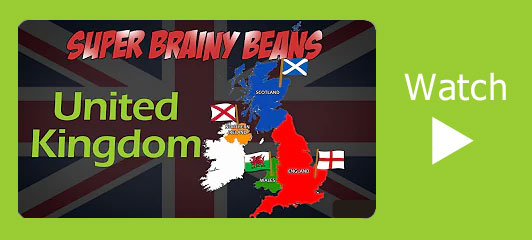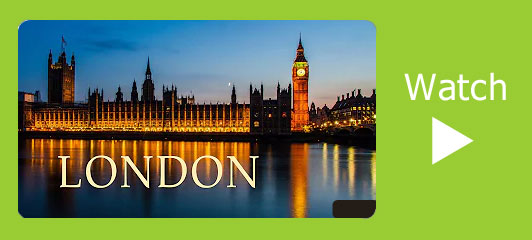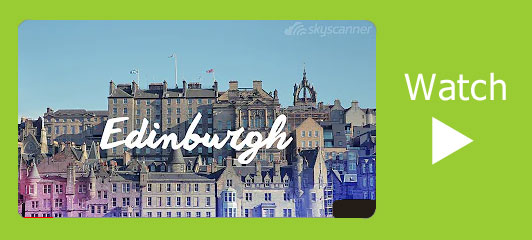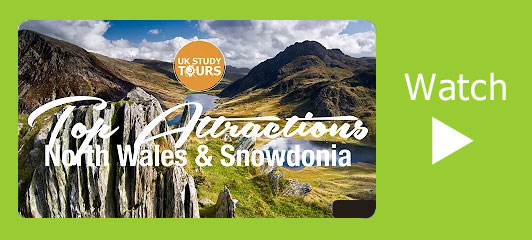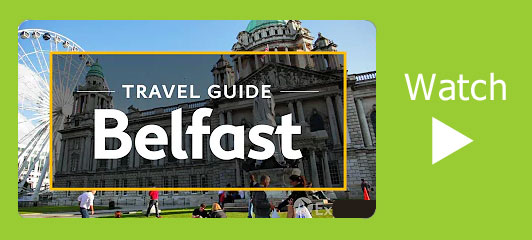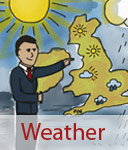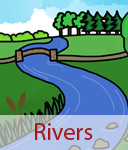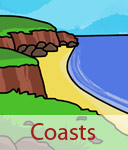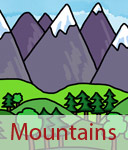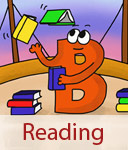
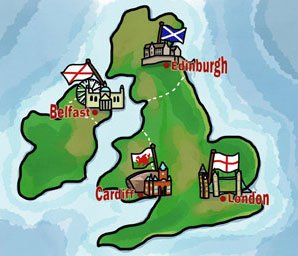
United Kingdom countries
United Kingdom countries in England, Scotland, Wales and Northern Ireland. See the locations of the four countries. Geography for kids Primary homework help with KS1 and KS2 geography.
Countries of the United Kingdom (UK)
There are four countries that make up the United Kingdom (UK) these are, England, Scotland, Wales and Northern Ireland.
England, Scotland and Wales are all joined together on one island which is called Great Britain. Northern Ireland is together with Southern Ireland. Southern Ireland is not part of the UK.
The British Isles are all of the islands put together which are England, Scotland, Wales, Northern Ireland and Southern Ireland.
- England is the largest and most populous country in the UK. It is home to the capital city of London, which is one of the world's leading financial and cultural centers. England is also home to a wide variety of historical and cultural landmarks, such as Stonehenge, the Tower of London, and Buckingham Palace.
- Scotland is the second largest country in the UK. It is known for its rugged landscape, its many castles, and its vibrant culture. Scotland is also home to the world-famous Loch Ness monster.
- Wales is the third largest country in the UK. It is a land of mountains, valleys, and forests. Wales is also home to a rich Celtic culture, which is evident in its music, art, and language.
- Northern Ireland is the smallest country in the UK. It is located on the northeastern part of the island of Ireland. Northern Ireland is home to a diverse population, with a mix of Irish and British influences.
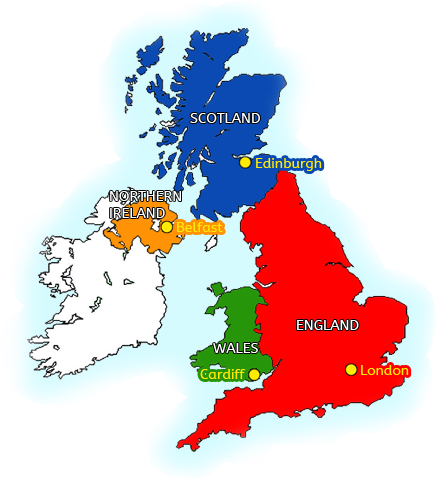
Flags of the United Kingdom
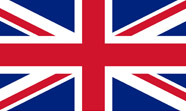 Each country of the UK has its own special flag to show who they are.
Each country of the UK has its own special flag to show who they are.
The United Kingdom also has its own flag, called the Union Jack. The word union means “joined together”, and the flag is made by combining the flags of England, Scotland and Ireland. That’s why it looks so busy – it’s like a puzzle where the shapes overlap!
You might notice that the Welsh dragon is missing from the Union Jack. That’s because when the flag was first created in 1606, Wales was joined with England and wasn’t thought of as a separate country at the time. Even though things are different today, the Union Jack is still used to represent the whole United Kingdom.
The Union Jack has become one of the most famous flags in the world. You can spot it on British ships, at sporting events, and even on clothes, bags and souvenirs!
England
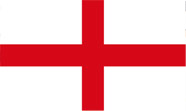 England is the largest country in the United Kingdom. It shares borders with Scotland to the north and Wales to the west. The rest of its land is surrounded by the sea.
England is the largest country in the United Kingdom. It shares borders with Scotland to the north and Wales to the west. The rest of its land is surrounded by the sea.
The capital city of England is London, one of the busiest and most exciting cities in the world. London is packed with famous landmarks such as the Tower of London, Big Ben, the Houses of Parliament, and the tall glass building called The Shard. It is also home to Buckingham Palace, where the British monarch (the king or queen) lives when they are in London. Every day, visitors can watch the colourful Changing of the Guard ceremony outside the palace.
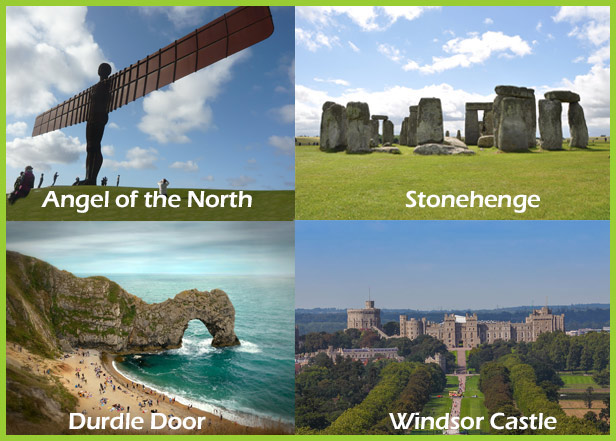 England’s Government is part of the Government of the United Kingdom, which is run from London. The leader is called the Prime Minister. The Prime Minister works with a group of important helpers called the Cabinet, and together they make decisions and create laws for the whole UK.
England’s Government is part of the Government of the United Kingdom, which is run from London. The leader is called the Prime Minister. The Prime Minister works with a group of important helpers called the Cabinet, and together they make decisions and create laws for the whole UK.
The national flag of England is the St George’s Cross – a simple red cross on a white background. People in England speak English, which is one of the most widely spoken languages in the world.
The land in England is varied. Much of the centre and south is made up of gentle low hills and wide open plains, which makes it great for farming. In the north, as you get closer to Scotland, the land becomes more mountainous. The tallest mountain in England is Scafell Pike, which is found in the beautiful Lake District. The Lake District is also known for its sparkling lakes, green valleys, and wildlife.
As well as the famous places in London, England has many other incredible landmarks:
- the Angel of the North, a huge steel sculpture in the north-east,
- Stonehenge, a circle of giant stones built thousands of years ago,
- Durdle Door, a natural stone arch on the Jurassic Coast,
- and Windsor Castle, a royal home and one of the oldest castles still in use today.
England is also known for its football, tea, countryside villages, and history – from knights and castles to inventors and explorers who changed the world.
- Big Ben isn’t what you think! Big Ben is actually the name of the bell inside the Clock Tower, not the tower itself.
- Stonehenge is super old: It was built around 3000 BC, older than the Great Pyramids!
England fact file
Capital city: London
National flag: St.George's Cross
Patron Saint: St.George
National flower: Tudor rose
Population: 53.01 million
Highest peak: Scafell Pike 978 m
Longest river: (River Severn 354 km runs through Wales) River Thames 346 km
Scotland
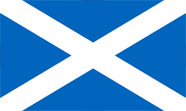 Scotland is the most northerly part of the United Kingdom. It has its own unique history, traditions, and landscapes that make it very special. The capital city is Edinburgh, a city full of history and culture. Sitting on top of an extinct volcano is the mighty Edinburgh Castle, one of the most famous castles in the world. From its walls, you can see across the whole city.
Scotland is the most northerly part of the United Kingdom. It has its own unique history, traditions, and landscapes that make it very special. The capital city is Edinburgh, a city full of history and culture. Sitting on top of an extinct volcano is the mighty Edinburgh Castle, one of the most famous castles in the world. From its walls, you can see across the whole city.
Edinburgh is also home to the Scottish Parliament, where important decisions are made about how Scotland is run. The UK Government in London still controls things like defence (the army), foreign affairs (relationships with other countries), and immigration rules, but the Scottish Parliament is in charge of areas such as health, law, and education in Scotland.
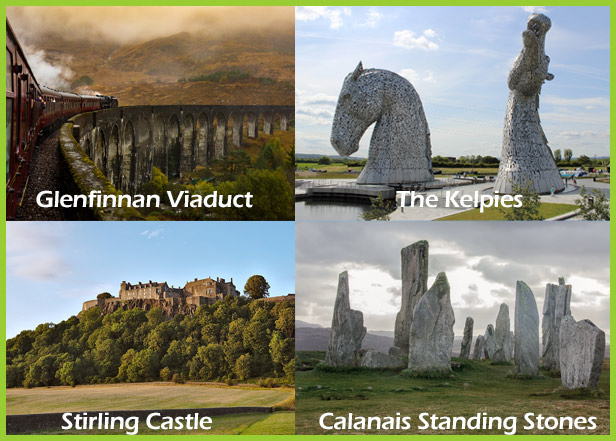 Another major city is Glasgow, which, like Edinburgh, is in the south of Scotland. Glasgow is known for its music, art, and football, and it has easy travel links to the rest of the UK.
Another major city is Glasgow, which, like Edinburgh, is in the south of Scotland. Glasgow is known for its music, art, and football, and it has easy travel links to the rest of the UK.
In the north of Scotland lies the Scottish Highlands. This is a beautiful area with dramatic mountains, wide valleys, and deep lakes. The highest mountain in the entire UK, Ben Nevis, can be found here. Further north are the Shetland Islands – there are around 100 islands in this group, though only 16 have people living on them. Life on the islands is quieter and closer to nature, with lots of seabirds and seals.
In Scotland, lakes are called lochs. The most famous is Loch Ness, which is one of the deepest lochs. Many visitors come here each year hoping to catch a glimpse of the mysterious Loch Ness Monster, or “Nessie” as she is often called.
Scotland is also home to many other famous landmarks:
- the Glenfinnan Viaduct, a railway bridge that appears in the Harry Potter films,
- The Kelpies, two giant horse-head sculptures that light up at night,
- Stirling Castle, which played a key role in Scotland’s history,
- and the ancient Calanais Standing Stones on the Isle of Lewis, which are even older than Stonehenge!
Scotland is famous for its bagpipes, kilts, and Highland Games where people compete in traditional sports like tossing the caber (throwing a giant log!). It is also known for its wildlife – from red deer in the Highlands to puffins on the islands.
- Separated from England? Hundreds of millions of years ago, Scotland was actually joined to America and Greenland!
- Oldest tree in Europe: Found in Scotland, a twisted yew tree that’s about 3,000 years old!
Scotland fact file
Capital city: Edinburgh
National flag: The Saltire
Patron Saint: St.Andrew
National flower: Thistle
Population: 5.29 million
Highest peak: Ben Nevis 1,345 m
Longest river: River Tay 188 km
National Dress: Scottish kilts
Languages: English, Scots, Scottish Gaelic
Wales
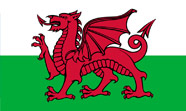
Wales is located to the west of England and has a long coastline along the Irish Sea and the Bristol Channel. It is a country of mountains, castles, and legends. The capital city is Cardiff, which is in the south of Wales. Cardiff is a lively city with a big stadium called the Principality Stadium, where rugby matches and concerts are held, and the modern Wales Millennium Centre, a theatre known for its shiny, patterned walls.
When Wales first became part of the United Kingdom, it was ruled by England. Today, things are different – Wales now has its own government, called the Senedd (Welsh Parliament). The Senedd can make important decisions for Wales about health, education, and the environment, while the UK Government in London looks after things like defence and foreign affairs.
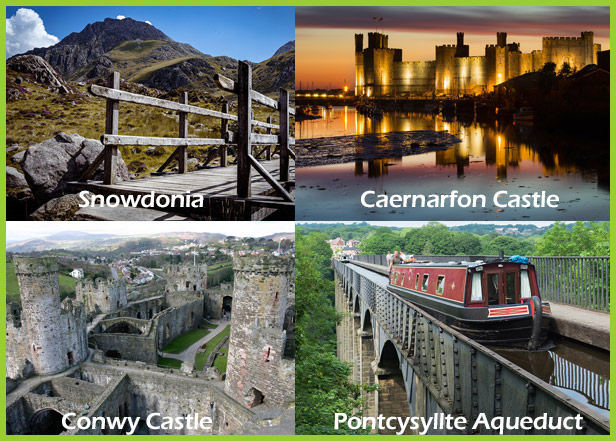 The national flag of Wales is called Y Ddraig Goch, which means The Red Dragon in Welsh. It shows a bright red dragon standing proudly on a green and white background. The dragon has been a symbol of Wales for hundreds of years. People in Wales speak both English and Welsh. Welsh is one of the oldest languages in Europe and is still spoken by many people, especially in the north and west of the country.
The national flag of Wales is called Y Ddraig Goch, which means The Red Dragon in Welsh. It shows a bright red dragon standing proudly on a green and white background. The dragon has been a symbol of Wales for hundreds of years. People in Wales speak both English and Welsh. Welsh is one of the oldest languages in Europe and is still spoken by many people, especially in the north and west of the country.
Wales is famous for its stunning landscapes. In the north, you’ll find Snowdonia National Park, home to the highest mountain in Wales, Snowdon (Yr Wyddfa in Welsh). Thousands of people climb Snowdon every year, and on a clear day you can see across the whole of Wales, and even as far as Ireland! There are also trains that take visitors to the top if they don’t want to hike.
Wales is sometimes called the “Land of Castles” because it has more castles per square mile than any other country in the world. Some of the most famous include Caernarfon Castle, where Prince Charles was crowned Prince of Wales, and Conwy Castle, with its tall towers and strong stone walls.
Other landmarks in Wales include the Pontcysyllte Aqueduct, a bridge that carries canal boats high above the valley, and the beautiful beaches on the Gower Peninsula. The country is also known for its music, from traditional choirs to modern singers, and for its passion for rugby, which is the national sport.
Wales has a rich culture full of myths and legends – from King Arthur to tales of dragons and magical creatures. Today, it remains a country proud of its history, language, and beautiful scenery.
- Llanfairpwllgwyngyllgogerychwyrndrobwllllantysiliogogogoch is a village in Wales which has the longest place name in Europe.
- Wales has about three times as many sheep as people—there are nearly 10 million sheep compared to just over 3 million people.
Wales fact file
Capital city: Cardiff
National Flag: Y Ddraig Goch, meaning red dragon
Patron Saint: St.David
National Flower: Daffodil
Population: 3.06 million
Highest peak: Snowdon 1,085 m
Longest river: River Severn 354 km
National Dress: Bedgown
Languages: English, Welsh
Northern Ireland
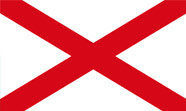
Ireland is made up of two parts: the Republic of Ireland in the south, and Northern Ireland in the north. The Republic of Ireland is an independent country, so it is not part of the United Kingdom. Its capital city is Dublin. The northern part, Northern Ireland, is part of the UK, and its capital city is Belfast.
Northern Ireland has its own government, called the Northern Ireland Assembly. The parliament buildings, known as Stormont, are in Belfast. The Assembly makes decisions on things like housing, employment, education, health, farming, and the environment. For bigger issues such as defence and international relations, decisions are still made by the UK Government in London.
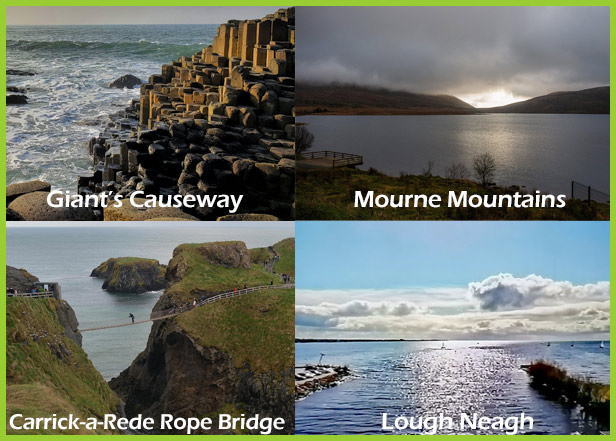 The flag linked to Northern Ireland is called Saint Patrick’s Saltire. It is a red diagonal cross on a white background. People in Northern Ireland mainly speak English, but Irish (Gaelic) and Ulster Scots are also spoken by some communities. Irish culture is very traditional, and things like Irish dancing, Gaelic football, and hurling (a fast-moving stick-and-ball game) are all very popular.
The flag linked to Northern Ireland is called Saint Patrick’s Saltire. It is a red diagonal cross on a white background. People in Northern Ireland mainly speak English, but Irish (Gaelic) and Ulster Scots are also spoken by some communities. Irish culture is very traditional, and things like Irish dancing, Gaelic football, and hurling (a fast-moving stick-and-ball game) are all very popular.
The landscape of Northern Ireland is full of rolling hills, mountains, and green fields. The hills around Belfast are said to look like a sleeping giant lying on the ground. Because of its location, Northern Ireland often gets more rain and clouds than the rest of the UK. This makes the land very green, which is why Ireland is often called the “Emerald Isle.”
One of the most famous natural wonders is the Giant’s Causeway on the north coast. It is made up of about 40,000 hexagonal rock columns that look like giant stepping stones leading into the sea, formed by ancient volcanic activity. According to legend, the stones were built by an Irish giant called Finn McCool!
In Belfast, you can also visit Titanic Belfast, a museum on the exact site where the famous ship, the Titanic, was designed, built, and launched in 1912. Other beautiful places in Northern Ireland include the Mourne Mountains, which inspired the writer C.S. Lewis to create the magical land of Narnia, and the Carrick-a-Rede Rope Bridge, which swings high above the sea and offers amazing views of the coastline.
Northern Ireland is known for its warm hospitality, its music and festivals, and its stunning scenery – from castles and cliffs to forests and lakes.
- Lough Neagh is the largest freshwater lake in Britain and Ireland.
- Northern Ireland, like the rest of Ireland, has no snakes or toads—a lucky charm for many.
Northern Ireland fact file
Capital city: Belfast
National flag: Saint Patrick's Saltire
Patron Saint: St.Patrick
National flower: Flax Flower or Shamrock
Population: 1.81 million
Highest peak: Slieve Donard 850 m
Longest river: River Bann 129 km
Languages: English, Irish, Gaelic

